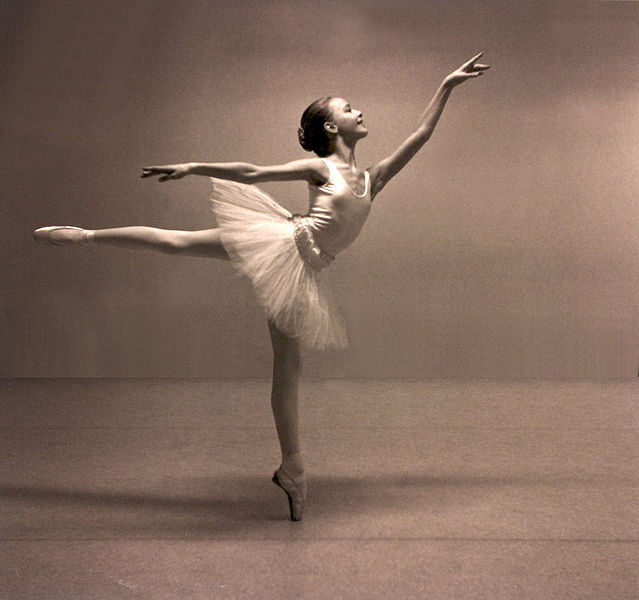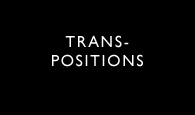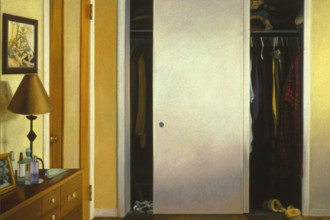 From Christmas to the Corpus Christi, the liturgical year keeps on reminding us about how the Word of God has assumed a human nature. We call this the “incarnation”, which means “to become flesh”.
From Christmas to the Corpus Christi, the liturgical year keeps on reminding us about how the Word of God has assumed a human nature. We call this the “incarnation”, which means “to become flesh”.
For at least two reasons, it is very significant that God chose to indwell the flesh and blood of humanity. First, according to the modern sensibility, bodies are perceived as a material that should be dominated through the techniques of the sciences (such as medicine). Second, according to some in the Christian faith, it would seem to make more sense to define the incarnation as God becoming a soul, as we share corporality with all material creatures while our souls seem to be our distinctive aspect. In contrast to both of these views, a proper understanding of Jesus Christ’s incarnation points toward the real depth expressed by our bodies.
But what has this to do with Art? Well, everything!
First of all, Art happens in the space of sensuality. Art takes reality through our bodies: there’s no such a thing as an immaterial art. Therefore, corporality is a condition of Art, and Art, as a genuine human space, is deeply related with the particularity of the human body among all the other material beings (which are capable of beauty, but not of art). Also, this means that Art, as a language, as something that holds and expresses sense, is ciphered in human coordinates.
Secondly, the human body, in shape and specifications, has always been a main object of Art. I don’t think this needs any more demonstration than opening a book on the History of Art. Moreover, the way the human body is represented is an essential element in defining and categorising different artistic styles and movements. And I do not mean only the visual arts; this applies to all of the arts.
Where does the specificity of human body lay? In its intrinsic unity with the spirit.
This unity is showed in its very configuration. A good example of this is the natural weakness and absurdity of our bodies when compared with the efficient bodies of animals. Our bodies are less designed for survival than for intimacy, and only intimacy truly reveals the uniqueness of our bodies in their spiritual structure. Intimacy is the field of encounter, of interspersion, of two spheres of life; that encounter is an enlightening of sense. Art is the result of the artist’s physical relation of intimacy with truth and beauty, a complicated relation sometimes…
Philosophical Anthropology teaches us that our bodies are the word of the spirit, the living place for the realization of men and women as persons. My body is not a part of me or something I own, it is me myself: it not only participates completely in the realization of my spiritual self, it also constitutes it. Corporality is the specific way on which the human spirit exists. For that reason, the physical human body has a specific meaning and is capable of revealing answers regarding fundamental questions about us and our lives. That’s why it is a valuable object of Art. That’s why one of its more defining actions is Art: it is our bodies speaking sense.
What do you think? Do you think art discloses the vital complexity of the human body? Do you think all artistic approaches to our bodies do justice to them? How do you think our bodies express our transcendent dimension?
_______________________________________________________
Leticia Cortina Aracil has a degree in Philosophy from the Universidad Pontificia de Comillas, Spain. She is currently pursuing PhD research there on Karol Kerényi’s method of reconstructing human spiritual experiences through the archaeological study of art, myths and religious cult. For the last several years, she has been a lecturer of Humanities in the Universidad Francisco de Vitoria, focusing mostly in Anthropology and Aesthetics. She believes that everything human starts with wonder and grows in self-commitment with truth, and she hopes that her work is proof of it.






Excellent, yes, yes, yes! I love this particular line: “Our bodies are less designed for survival than for intimacy, and only intimacy truly reveals the uniqueness of our bodies in their spiritual structure.”
Thank you Matt.
I have looked around you gallery and seeing you work makes you enthusiasm very meaningful.
First, I’m so happy that the picture features a dancer in a (mostly) technically correct position! Thank you for honoring this art form by the carefulness of your selection for accompanying photograph.
(I’m going to tie in dance to your essay, because your ideas form such great springboards!)
The picture: She most likely trained for about ten years to achieve that precision; dance, but ballet most of all, requires the individual to control every muscle possible, in fact completely shape his or her entire muscle structure, to fulfill both the athletic and aesthetic demands of the art form.
“Art takes reality through our bodies”: Interestingly put. I’m very much fascinated by how dance intersects space and time (movement and music).
Choreography uses the corps (the collective body of dancers) in elegant, living, changing architectural and geometrical designs, not only as a collective artwork, but with every dancer as a kind of individual piece of artwork (beautifully shaped body, moving beautifully, accompanied by beautiful music ), the entire dancing becomes artwork within artwork within artwork.
And it’s such incredibly “real” art- art in the flesh, breathing and radiating intelligence and artistry. Which is not to dismiss other art as “less than real” or imply any kind of inferiority, but only to highlight a kind of uniqueness in its ability to fully use a human’s physicality.
Whew. Thank you for such a well-thought essay. And I’d love to hear what other people have to add!
I agree. Thanks for at least using a photo of a dancer. I’ve read so many articles and books on the arts and dance is more often not even mentioned as a discipline, much less an art.
Joe
Thank you very much Marilyn! The merit of the picture goes to James Watkins, my editor, who suggested it for the article.
I am really glad you bring the dancing into the topic!
Your interesting reflections here reminded me of an essay by W. F. Otto, Die Gestalt und das Sei (Düsseldorf 1955), which translates “the figure and the being”. He has a chapter on the human figure and the dance. Otto says that dancing is an expression of all that is eternally beautiful and divine, “when life is entirely itself, this is, when it frees itself from the temporality and the needs and the purpose, then the dance fills up with rhythm and harmony, fills of a math of divine origin that acts in the depths of all things, and this is made visible through the perfecting of its shape (…) It means becoming one and the same with the life of the Universe (…) to become the the human being as the original creature (…) The existence which truth talks though the shape, the gesture and the movement. If all arts, as it is known by all those whose thoughts are deeper, have precisely this fundamental meaning, then the dance is of paramount importance and more venerable than any other of them: here man don’t create anything material but they become -with themselves- the answer, the shape and the truth.”
The idea behind is intimately bonded with the deep nature of music and with dancing as the genuine human response to it. A kind of intimacy the way I see it…
May I ask if you have experience in with dancing yourself?
Leticia
Yes, I’m a dancer!
“Art happens in the space of sensuality. Art takes reality through our bodies: there’s no such a thing as an immaterial art. Therefore, corporality is a condition of Art, and Art, as a genuine human space, is deeply related with the particularity of the human body among all the other material beings ”
The tragedy of Modernism has been this bifurcation of material and immaterial. Even artists like Kandinsky, in confronting materialism, bought into this bifurcation and proclaimed the immaterial as the domain of art. This has lead to the connotation of art as superfluous, unnecessary to our physical welfare and condition.
You have completely tuned that thinking on its head. One can no more extract or extricate art from our physical as from our spiritual. Our being created in the image of a creative God, how would that even be possible?
“Do you think art discloses the vital complexity of the human body?”
By your own article, I would think this question would be better asked, “Do you think art discloses the vital complexity of the human soul?” But then, by your article, I am uncertain as to how it would do otherwise?
When you ask “How do our bodies express a transcendent dimension?” you do move back into an immaterial result of art, regardless of its material expression and sensuality.
With the qualifier of the human body having a specific message, do you imply a necessity for representational art vs abstract or non-representational?
What an amazing article. I’ll be re-reading and thinking on this many times.
Joe
Thank you Joe!
I agree with your appreciation about Modernism. It is interesting how that principle was applied, for example, in some Communist environments and that can be appreciated in things like architecture –which got rid of all kind of decorations or artistic intentions taking them as superfluous- and how much that changed the interaction with the building and the people that inhabited them as a genuine human space.
I don’t think “do you think art discloses the vital complexity of the human soul?” is the right question in this case. Ultimately they are the same question with a different approach; seeing the human being as a substantial unity of body and soul, talking about the “parts” in drastic separation and pretending that you are still talking about a human being is not very rigorous. The approach, however, defines a lot of what we get to see in the process, hence is important to focus on the body.
Well, an artistic intention can be unfair and harmful to the body when it portrays it as a thing instead of a living structure of intimacy (this is very revealing when working the distinction between erotic art and pornography), it can be “used” instead of encountered through art, portrayed in order to be disrespected (like some of this postmodern irreverent attempts), or it can work after this body-soul break-up and not do any justice to the spiritual vitality that belongs precisely to the physical dimension of humanity.
When you say that I “move back into an immaterial result of art, regardless of its material expression and sensuality”, don’t you think there is a transcendence for the body too? If corporality is the specific way on which the human spirit exists, should transcendence consist in leaving what constitutes the realization of our spiritual selves behind?
On your last question, I find that even non- representational art is done from the coordinates given by our bodies. It is important to keep this in mind because it helps us clear some of the apparent disagreements between the foundations of representational art and non- representational art. Plus the abstraction of the body is also one of the themes in non- representational art.
I think the body is a reality deep enough to allow many different approaches, so I don’t really think representation and abstraction/non-representation are excluding options. But I do think the human heart has a necessity of representing the body as we have of representing everything precious. The way in which you turn to your physical self through the eyes of Art is transforming (substantially different from the way in which you turn to it through the eyes of a “beauty” magazine).